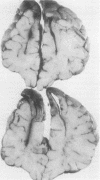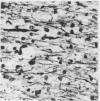Abstract
The brains from 12 babies up to 21/2 years of age, who died after repeated non-accidental injury to the head, were subjected to detailed neuropathological examination. The nine brains from infants under 5 months showed contusional tears--slit like lesions in the white matter surrounded by astrocytes and associated with evidence of old and recent haemorrhage. The three brains from infants over 5 months showed white matter lesions similar to those seen in adults after closed head injury, including damage in the dorsolateral quadrant of the brain stem without axonal hemispheric damage, which may have been a result of whiplash injury after shaking. In addition, all the brains examined showed diffuse gliosis. This paper draws attention to contusional tears and other white matter lesions, which the authors believe are manifestations of mechanical damage produced by trauma. The long term neurological and intellectual defects observed in patients suffering non-accidental injury early in life are increasingly being recognised, although it is difficult to identify the extent to which these are due to social or neuropathological factors. We suggest that the white matter damage we describe has an important role.
Full text
PDF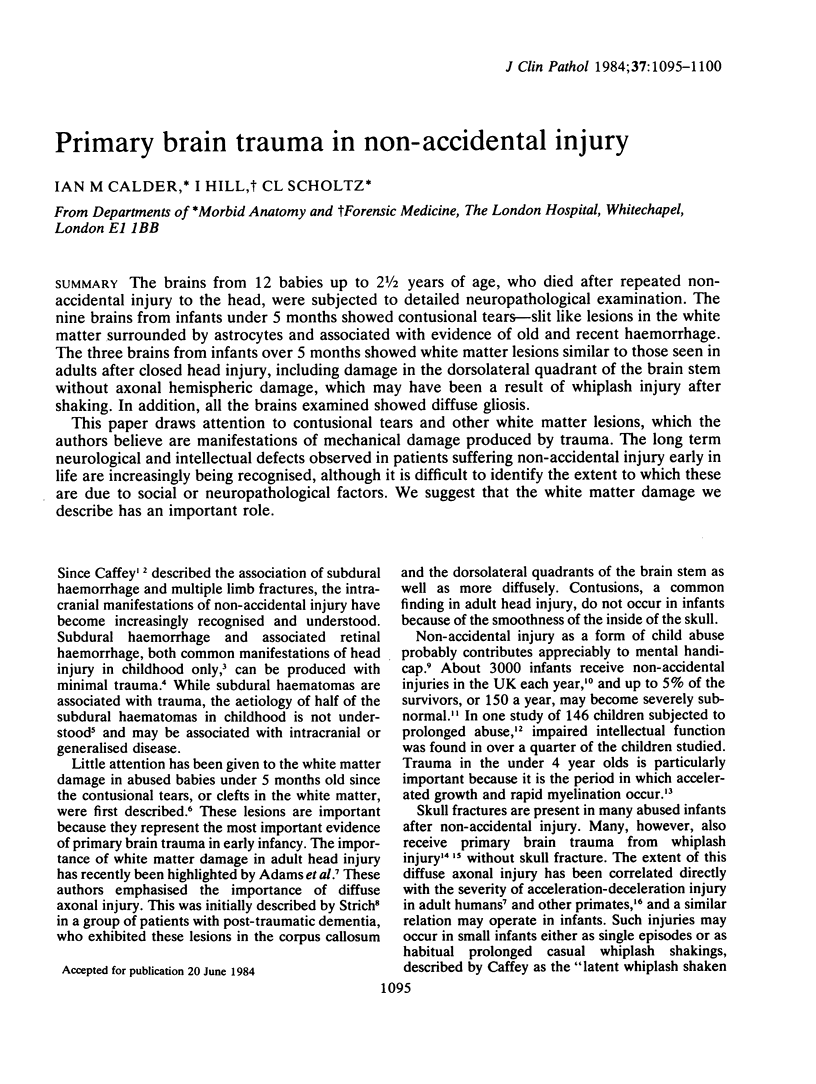
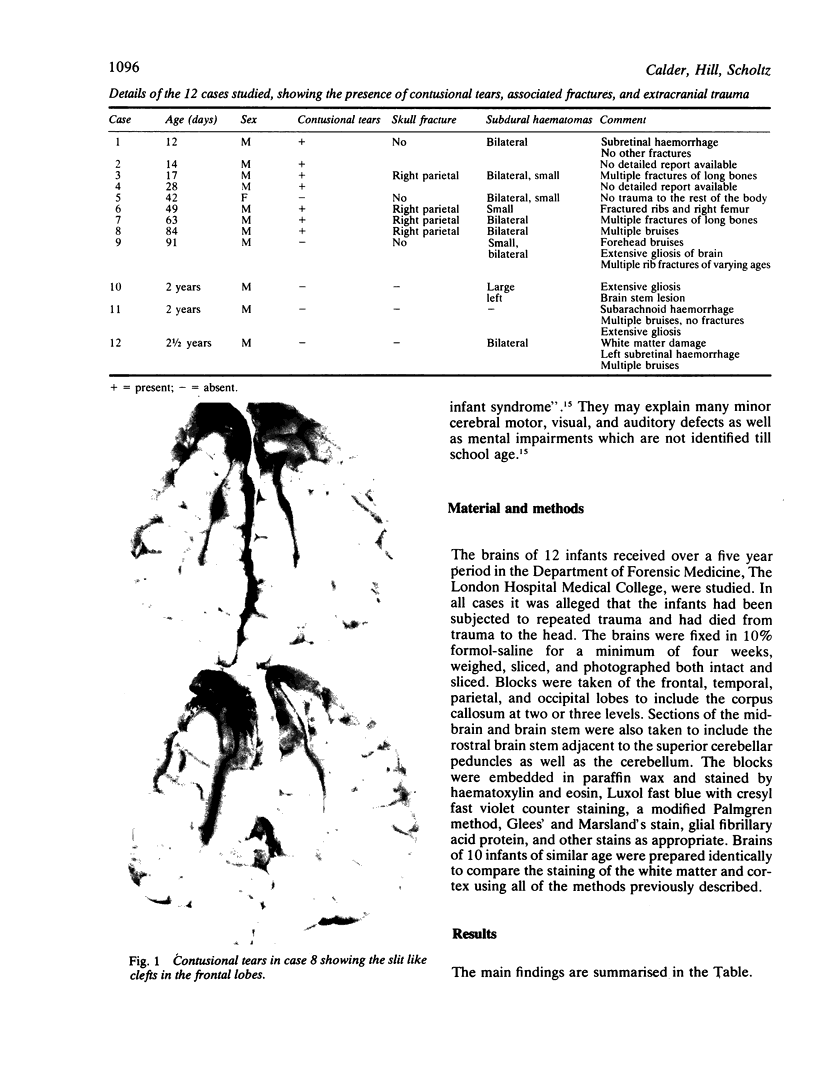
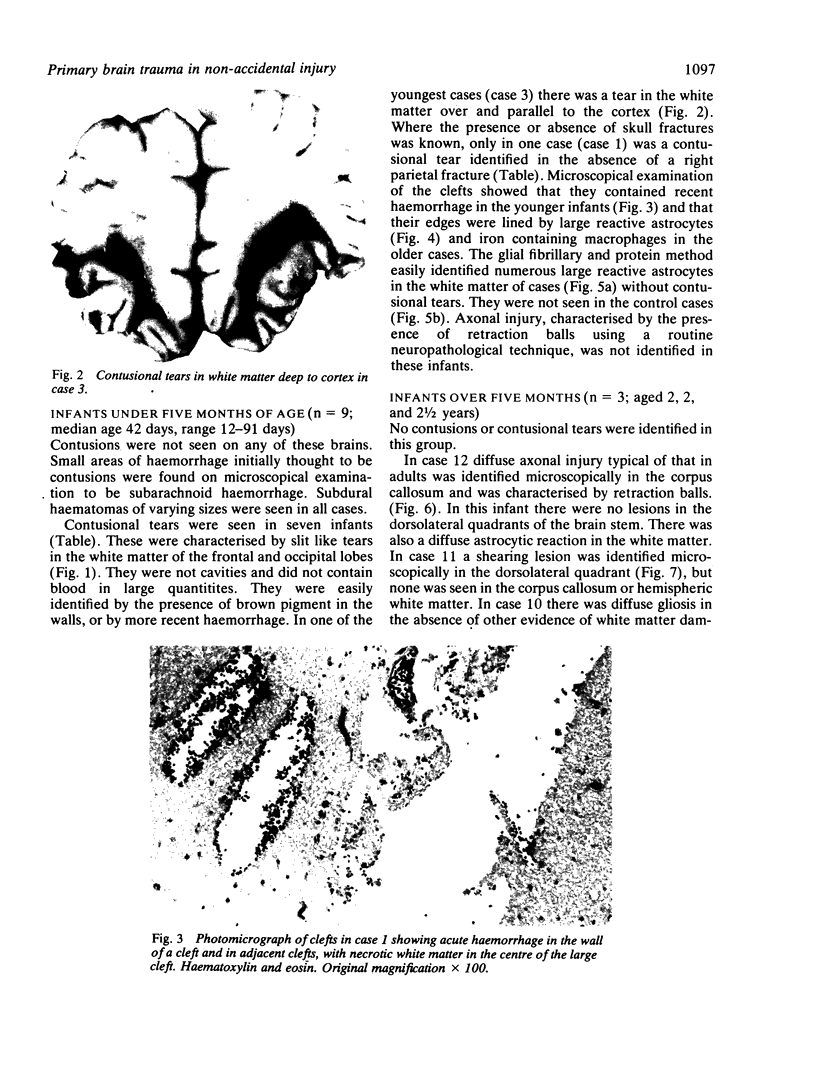
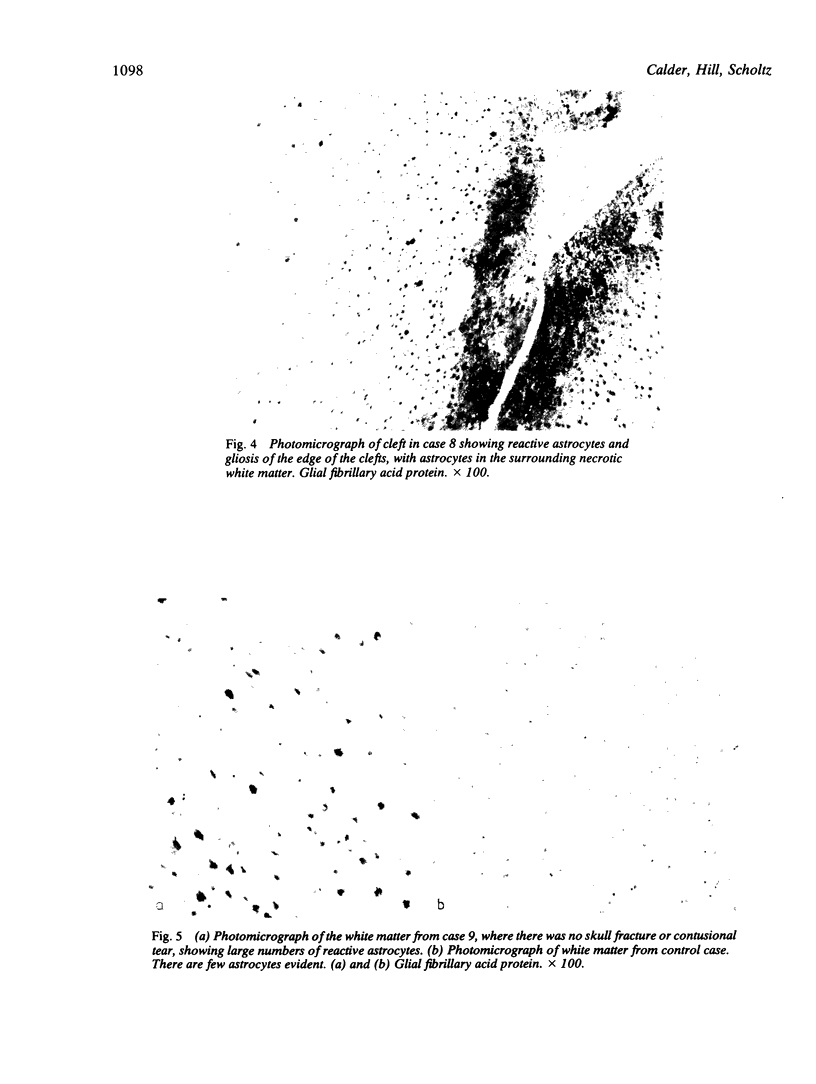
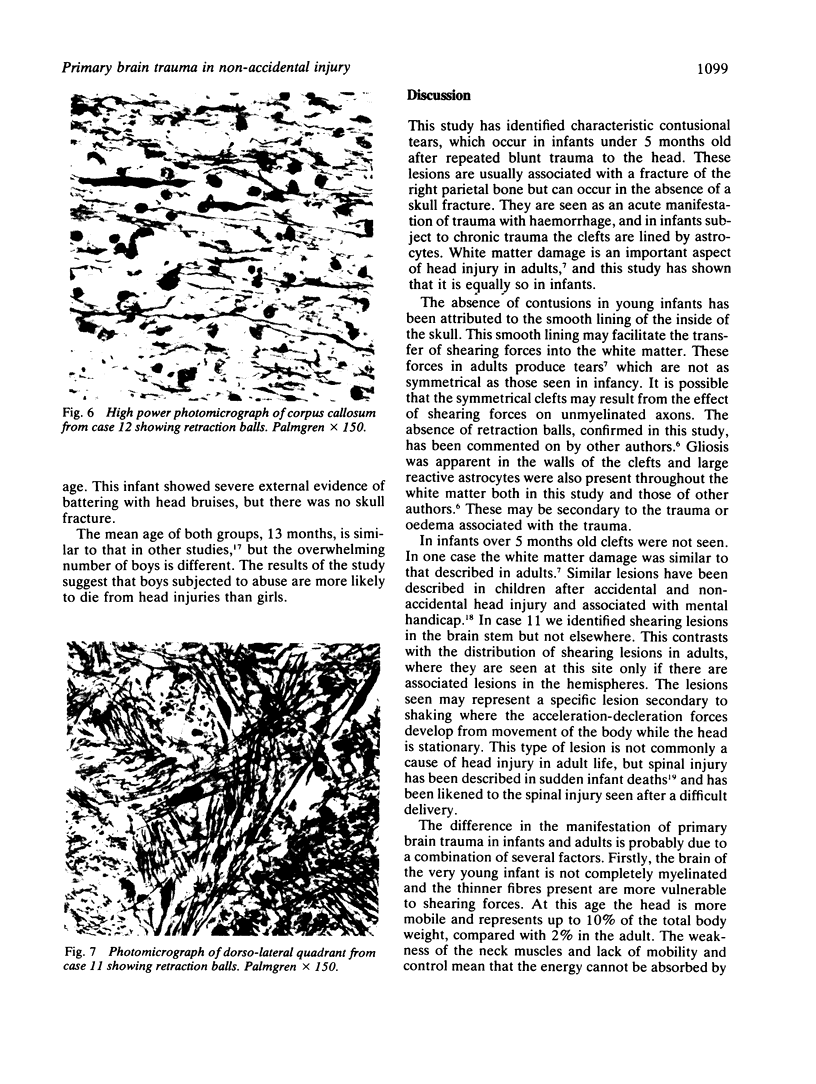
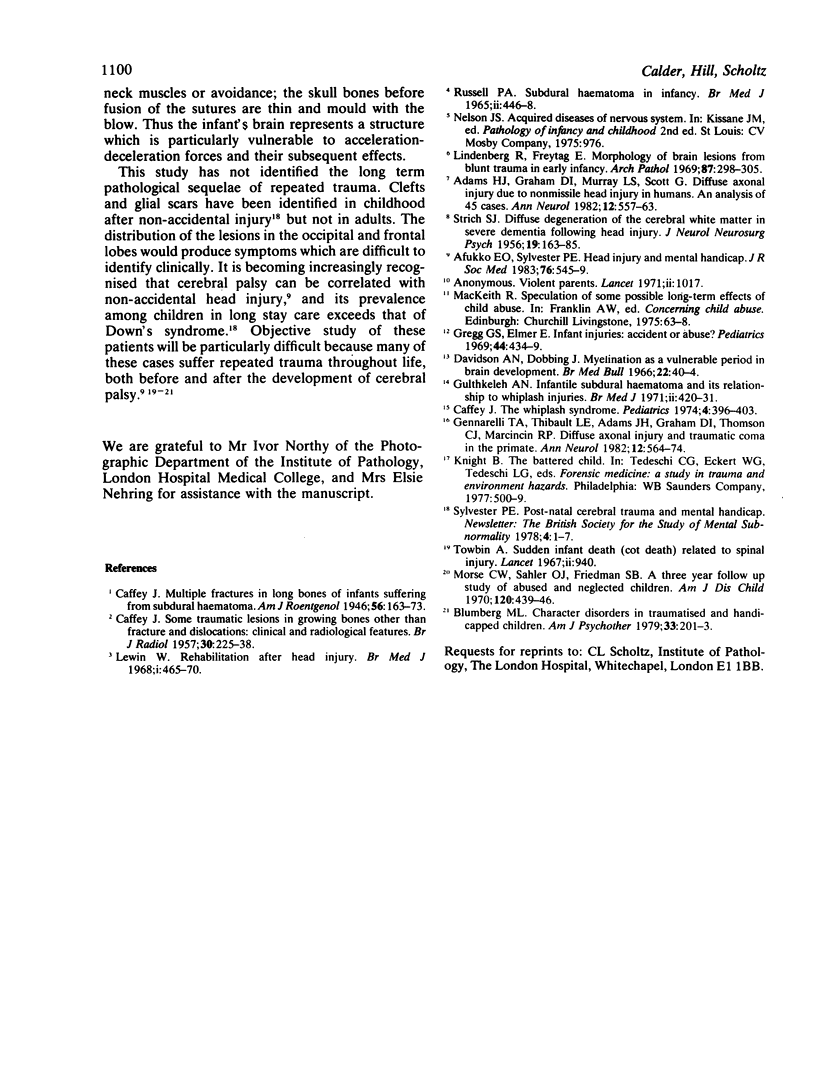
Images in this article
Selected References
These references are in PubMed. This may not be the complete list of references from this article.
- Adams J. H., Graham D. I., Murray L. S., Scott G. Diffuse axonal injury due to nonmissile head injury in humans: an analysis of 45 cases. Ann Neurol. 1982 Dec;12(6):557–563. doi: 10.1002/ana.410120610. [DOI] [PubMed] [Google Scholar]
- Akuffo E. O., Sylvester P. E. Head injury and mental handicap. J R Soc Med. 1983 Jul;76(7):545–549. doi: 10.1177/014107688307600704. [DOI] [PMC free article] [PubMed] [Google Scholar]
- Blumberg M. L. Character disorders in traumatized and handicapped children. Am J Psychother. 1979 Apr;33(2):201–203. doi: 10.1176/appi.psychotherapy.1979.33.2.201. [DOI] [PubMed] [Google Scholar]
- CAFFEY J. Some traumatic lesions in growing bones other than fractures and dislocations: clinical and radiological features: The Mackenzie Davidson Memorial Lecture. Br J Radiol. 1957 May;30(353):225–238. doi: 10.1259/0007-1285-30-353-225. [DOI] [PubMed] [Google Scholar]
- Caffey J. The whiplash shaken infant syndrome: manual shaking by the extremities with whiplash-induced intracranial and intraocular bleedings, linked with residual permanent brain damage and mental retardation. Pediatrics. 1974 Oct;54(4):396–403. [PubMed] [Google Scholar]
- Davison A. N., Dobbing J. Myelination as a vulnerable period in brain development. Br Med Bull. 1966 Jan;22(1):40–44. doi: 10.1093/oxfordjournals.bmb.a070434. [DOI] [PubMed] [Google Scholar]
- Gennarelli T. A., Thibault L. E., Adams J. H., Graham D. I., Thompson C. J., Marcincin R. P. Diffuse axonal injury and traumatic coma in the primate. Ann Neurol. 1982 Dec;12(6):564–574. doi: 10.1002/ana.410120611. [DOI] [PubMed] [Google Scholar]
- Gregg G. S., Elmer E. Infant injuries: accident or abuse? Pediatrics. 1969 Sep;44(3):434–439. [PubMed] [Google Scholar]
- Lewin W. Rehabilitation after head injury. Br Med J. 1968 Feb 24;1(5590):465–470. doi: 10.1136/bmj.1.5590.465. [DOI] [PMC free article] [PubMed] [Google Scholar]
- Lindenberg R., Freytag E. Morphology of brain lesions from blunt trauma in early infancy. Arch Pathol. 1969 Mar;87(3):298–305. [PubMed] [Google Scholar]
- Morse C. W., Sahler O. J., Friedman S. B. A three-year follow-up study of abused and neglected children. Am J Dis Child. 1970 Nov;120(5):439–446. doi: 10.1001/archpedi.1970.02100100103011. [DOI] [PubMed] [Google Scholar]
- RUSSELL P. A. SUBDURAL HAEMATOMA IN INFANCY. Br Med J. 1965 Aug 21;2(5459):446–448. doi: 10.1136/bmj.2.5459.446. [DOI] [PMC free article] [PubMed] [Google Scholar]
- STRICH S. J. Diffuse degeneration of the cerebral white matter in severe dementia following head injury. J Neurol Neurosurg Psychiatry. 1956 Aug;19(3):163–185. doi: 10.1136/jnnp.19.3.163. [DOI] [PMC free article] [PubMed] [Google Scholar]
- The N.H.S. reorganization--Mark 3. Br Med J. 1971 May 22;2(5759):420–420. [PMC free article] [PubMed] [Google Scholar]



